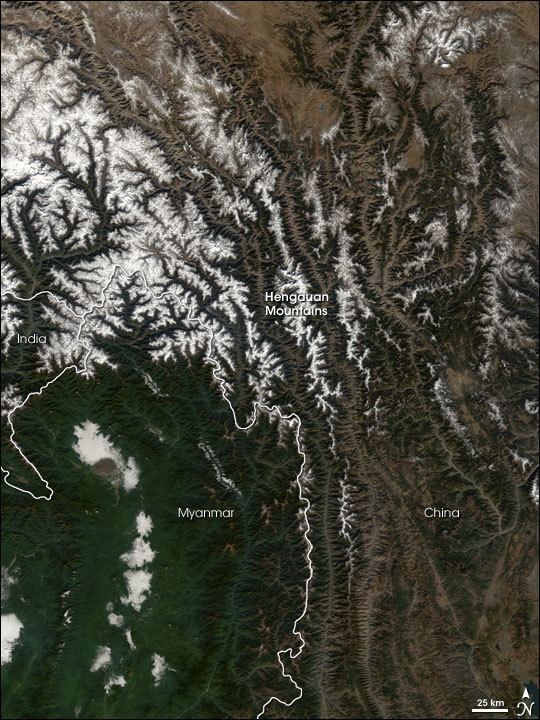Elevation 7,556 m Mountains Kawagarbo, Haba Xueshan | ||
 | ||
Similar Kawagarbo, Meili Xue Shan, Mount Gongga, Three Parallel Rivers of, Haba Xueshan | ||
Exploring for plants in china lecture hengduan mountains china not all diversity is tropical
The Hengduan Mountains (simplified Chinese: 横断山脉; traditional Chinese: 橫斷山脈; pinyin: Héngduàn Shānmài) is a large mountainous region in southwest China (latitude: 22°~32°05'N, longitude: 97°~ 103°E), forming the south-eastern part of the Qinghai-Tibet Plateau, and adjacent from the west to the Sichuan Basin.
Contents
- Exploring for plants in china lecture hengduan mountains china not all diversity is tropical
- Map of Hengduan Shan Weixi Deqen China
- Himalayan hengduan mountains and tibetan plateau air china s chengdu kathmandu flight ca437
- Geography
- Plant and animal life
- References
Map of Hengduan Shan, Weixi, Deqen, China
The mountainous region occupies most of the western part of the present-day Sichuan province (the pre-1955 Xikang), as well as the northwestern corner of Yunnan province and the easternmost section of Tibet Autonomous Region. This approximates the historical region known as Kham.
Mountain ranges in the southern end of the Hengduan system form the border between Burma and China.
The Hengduan Mountains subalpine conifer forests is a palaearctic ecoregion, in the Temperate coniferous forests Biome.
Himalayan hengduan mountains and tibetan plateau air china s chengdu kathmandu flight ca437
Geography
The Hengduan Mountain system consists of many mountain ranges, most of which run roughly north to south. The mountains stretch from eastern Tibet to Yunnan and Sichuan.
In the southwestern part of the Hengduan Mountain region, three great rivers of China and Southeast Asia - Yangtze (Jinsha), Mekong (Lancang) and Salween (Nujiang) - run in deep parallel valleys separated by mountain ranges that are components of the Hengduan system. The Three Parallel Rivers of Yunnan Protected Areas was created to protect the environment of that region.
Plant and animal life
Part of the mountains are within the Nujiang Langcang Gorge alpine conifer and mixed forests ecoregion and are largely covered in subalpine conifer forest. Elevations range from 1,300 to 6,000 metres (4,300 to 19,700 ft). The dense, pristine forest, the relative isolation and the fact that most of the area remained free from glaciation during the ice ages provides a very complex habitat with a high degree of biological diversity. This mountainous region is home to the rare and endangered giant panda. Other species native to the mountains are the Chinese yew (Taxus chinensis) and various other rare plants, deer, and primates.
Environmental groups have recognized this ecoregion as being threatened by "a growing human population and the resulting demand for non-timber forests and wildlife products for medicinal and other uses".
